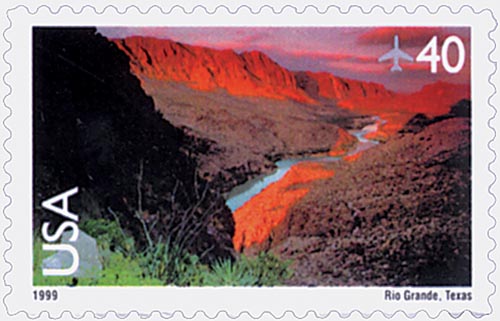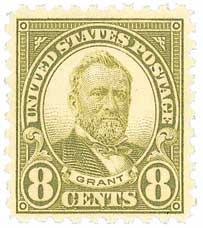
... more
1875 5¢ Taylor
Earliest Known Use: July 10, 1875
Quantity issued: 15,290,000 (estimate)
Printed by: Continental Bank Note Company
Method: Flat plate
Watermark: None
Perforation: 12
Color: Blue
Taylors Wins The Battle Of Palo Alto

On May 8, 1846, future President Zachary Taylor led U.S. forces to their first major victory of the Mexican-American War at the Battle of Palo Alto.
After the Republic of Texas won its independence from Mexico in 1836, it sought to join the United States. The union was delayed, as the Van Buren administration did not want to risk war with Mexico.
By the time James Polk took office in 1845, there was greater interest in adding Texas, and Polk won the presidential election largely because of his support for that issue. Even with the annexation of Texas, there was serious disagreement between Mexico and the U.S. as to the location of the southern border of the territory. Mexico claimed it was on the Nueces River, while Polk insisted it was on the Rio Grande. He ordered Taylor to set up a camp at the Rio Grande to defend the claim.

Taylor raised a force of 4,000 volunteers and established a military base. Several months later, Polk ordered Taylor to cross the river into territory that undisputedly belonged to Mexico. Taylor did so, and prepared for an attack, which came soon.

That first major battle of the Mexican-American War took place in Palo Alto on May 8, 1846. Mexican troops attacked Fort Texas, and Taylor, who was getting supplies at nearby Port Isabel, gathered his men to help defend the fort. His men met a Mexican force before they reached the fort and a battle began. Taylor employed a tactic known as “Flying Artillery,” where the artillery would attack from one position then quickly move to another. The Mexicans could not defend themselves against the strategy and withdrew that night.
General Arista, commander of the Mexican forces in the area, ordered his men to retreat to a strong defensive location called Resaca de la Palma. Taylor’s army, which was less than half the size of Arista’s, confronted them on May 9. Again the Americans out maneuvered the enemy, who fled the battlefield leaving many of their heavy guns behind.










